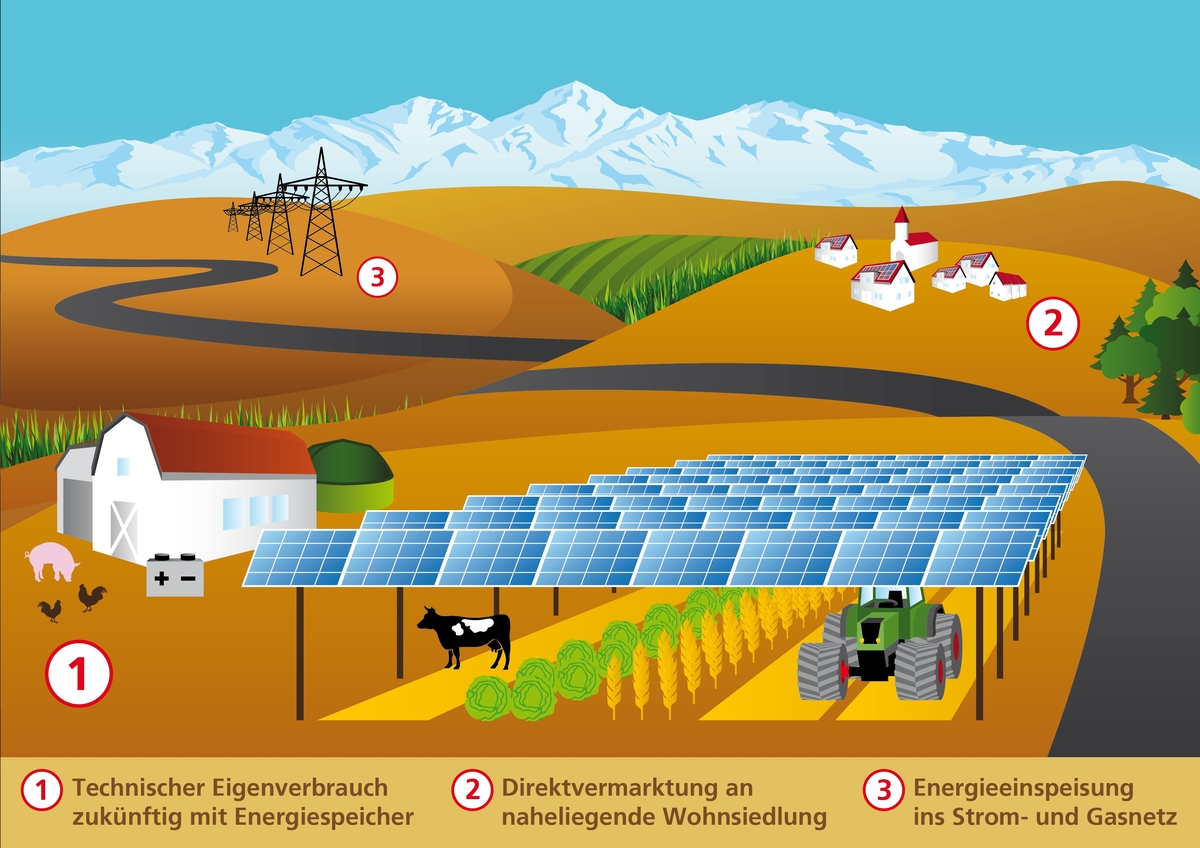Innovation group investigates agrophotovoltaics
Agrophotovoltaics (APV) combines photovoltaic installations with agricultural land use. The "double harvesting" of electricity and biomass from the same area can help to reduce conflicts between agriculture and the energy industry, to further advance the decentralized energy transition, and to increase the local added value at the same time.
The project "APV-RESOLA – Innovation group Agrophotovoltaic: Contribution to resource-efficient land use" is funded by the Federal Ministry of Education and Research (BMBF) from March 2015 to June 2019. Scientists from ITAS and several other research institutes analyze agrophotovoltaics as system technology for an innovative and sustainable management of agricultural land. The project is coordinated by the Fraunhofer Institute for Solar Energy Systems ISE and focuses on the installation and operation of a model plant on the premises of Hofgemeinschaft Heggelbach in the Bodensee-Oberschwaben region (farm community in the Lake Constance/Upper Swabia region).
On site, ITAS investigates the interface to local actors: How can they be involved to improve the innovation process and the market success of the technology? Under which conditions are agrophotovoltaic projects supported by the population? To answer these questions, ITAS prepares and realizes, among other things, two local citizens’ workshops. Their results will be used to provide recommendations for policy makers, service providers, and technology developers to further promote innovations. The the members of the consortium's innovation group also prepare an innovation concept for sustainable land use in the model region surrounding the planned experimental plant. (15.04.2015)
Further links


